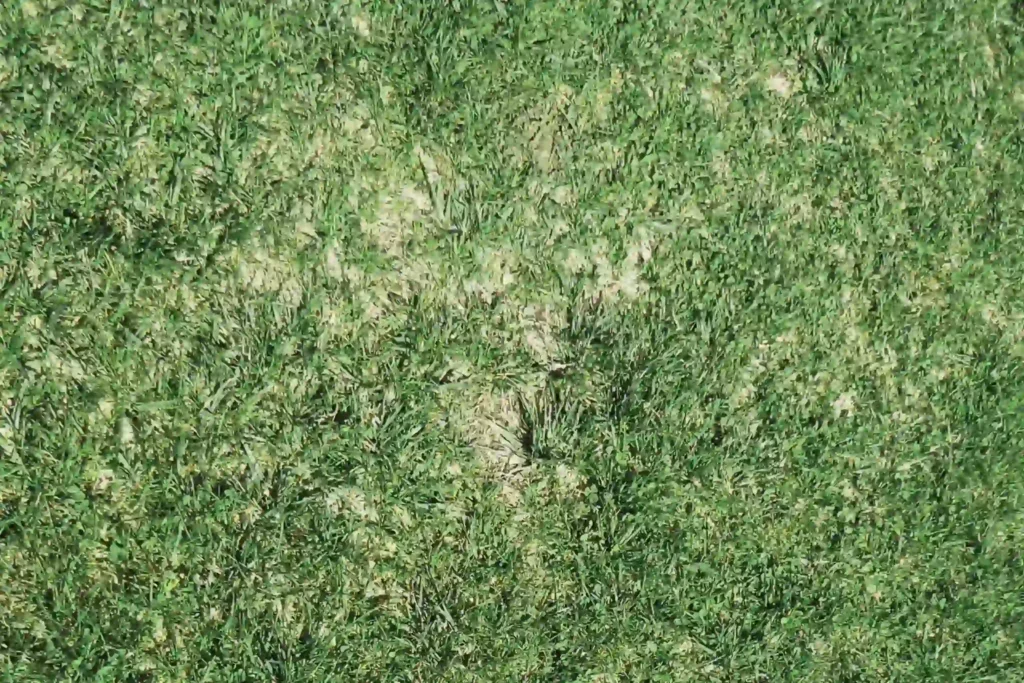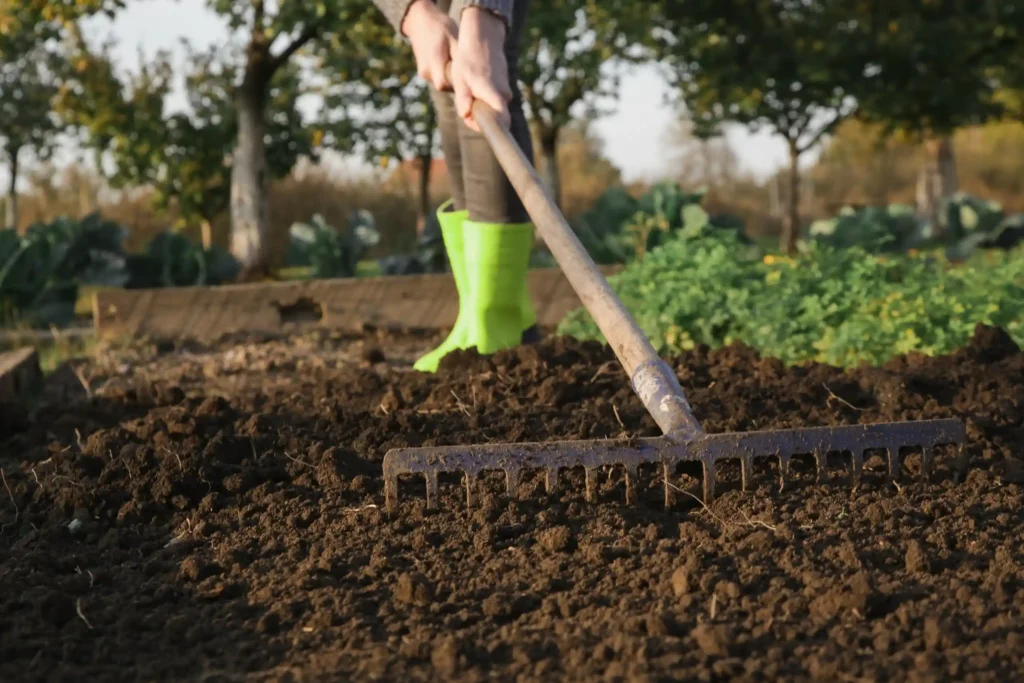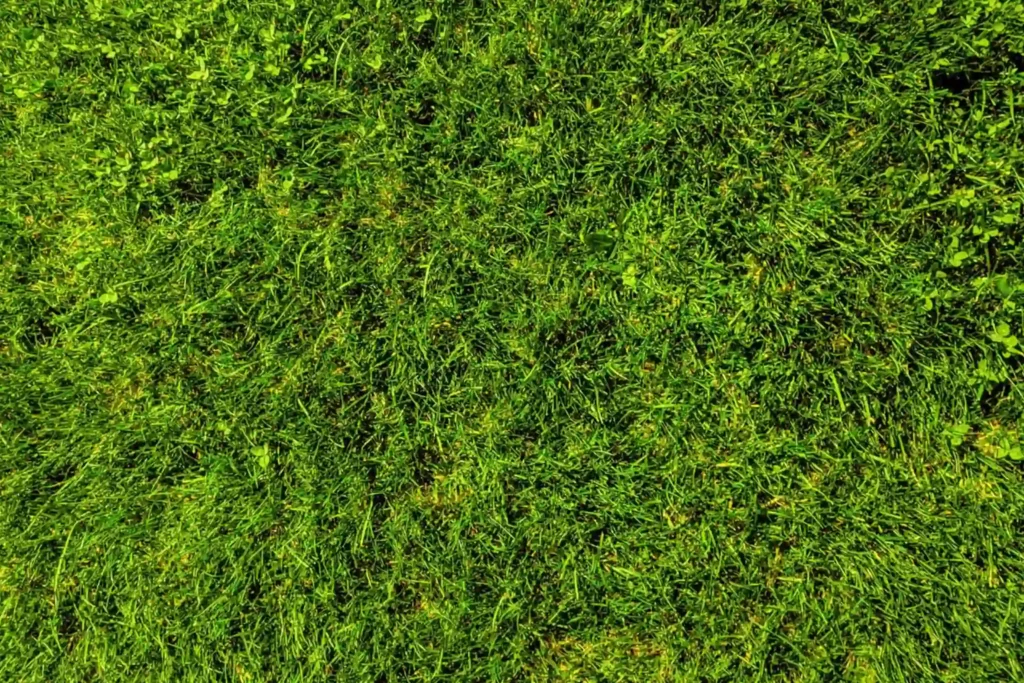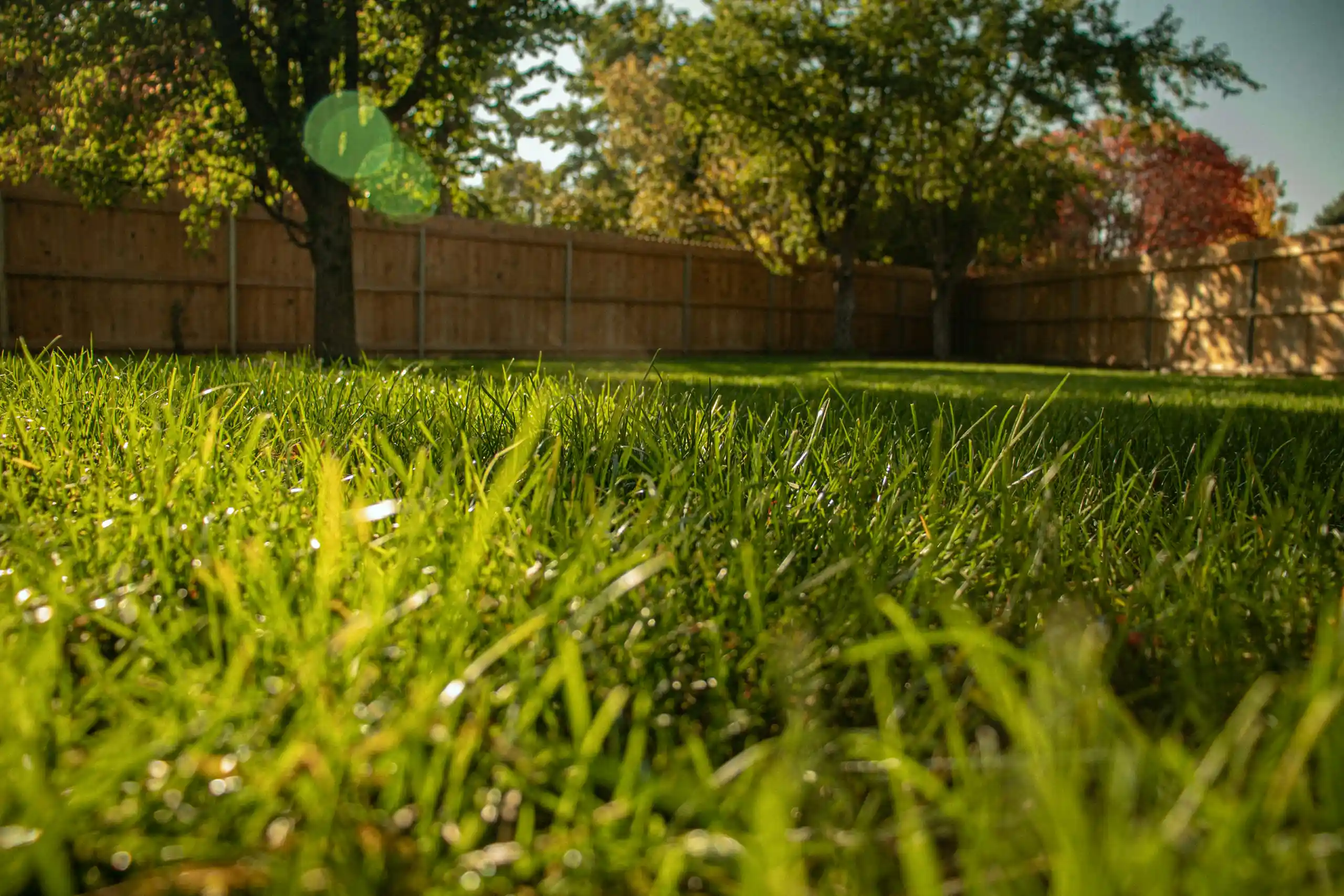After a long, hot summer, it is not unusual for your lawn to look a little worse for wear.
Intense heat and lack of rain can leave your once lush lawn, dry, patchy, and discoloured.
Do not worry – this is a common issue that can easily be fixed with the right approach!
Continue reading our guide, which will help you identify what heat stress looks like, the best grass for drought conditions, and how you can repair your lawn.
What does heat stress and drought look like on a lawn?

Heat stress is caused by your lawn being exposed to hot temperatures and not receiving enough water due to a lack of rainfall.
These conditions usually cause your grass to go dormant to conserve energy and protect its root system.
Here are some of the common signs of heat stress:
- Discolouration. Lack of water and heat will usually cause your grass to turn yellow and develop brown patches as it enters dormancy
- Wilted/curled blades. Grass blades will become dry and brittle, as they are losing water quicker than they can absorb it from the soil
- Patchy or thin areas. Lawns suffering from heat stress may develop sparse or bare patches. These are usually the areas of grass that are most exposed to the sun
- No spring back. Healthy grass blades will usually bounce back quickly after being stepped on, while those under heat stress will not, as they are weakened
- Increased weed growth. Weeds tend to take advantage of bare patches on the lawn, springing up in areas where the grass is at its weakest
- The screwdriver test. Test your soil’s moisture levels by pushing a screwdriver into the soil; if it goes in easily, your grass is hydrated. However, if it is difficult to push in, this can indicate that your lawn needs more water
Will grass grow back after hot weather?
Yes, grass will usually grow and return to a vibrant green once the ideal conditions have returned and it is adequately hydrated.
Yellow or brown grass can be alarming; however, it is important to know that dormant grass is still very much alive beneath the surface.
The better maintained your lawn is throughout the year, the longer it can withstand drought and heat.
What is the best grass for drought conditions?
Warm-season grasses are generally the best for those living in climates with high temperatures and a lack of rainfall.
The most drought-tolerant grass is Bermuda, as it has a deep root system, which means it can still access moisture and nutrients far below the soil surface, even during periods of drought.
Other warm-season grass varieties that can withstand drought conditions include Buffalo grass and Zoysia grass.
What to consider before repairing a lawn?
Now that you are aware of how to identify damage to your lawn and the best grass for drought conditions, it is time to look at how you can carry out lawn repair effectively.
Remember that repairing a heat or drought-damaged lawn requires extra care and attention, as your grass will be going through a period of recovery.
| Top Tip Before deciding on the best course of action to take, you need to identify if your grass is dead or dormant. To do this, we recommend carrying out a simple tug test, whereby you select a handful of grass and lightly pull. Dead grass can easily be pulled from the soil, while dormant grass will have some resistance as the roots will still be alive and healthy. |
How to revive a dormant lawn
The good news is that if your lawn is dormant, it is still alive and will start to repair itself over time.
However, with a bit of extra care and attention, you can easily help speed up your lawn’s recovery.
Use the following steps to revive a dormant lawn:
- Water consistently. Despite being dormant, your lawn will require deep and thorough watering to return moisture to the soil and grass roots, kickstarting its growth period
- Aerate your lawn. Soil can become compacted during the summer months, restricting your lawn’s access to vital nutrients and water. We recommend aerating cool-season grasses in early spring or autumn and warm-season grasses in late spring or early summer
- Add nutrients. Use our expertly blended Nourish & Nurture Fertiliser to replenish any lost nutrients and give your lawn the boost it needs
- Remove weeds and moss. These common garden pests are renowned for stealing nutrients and moisture from your lawn. Once your lawn is strong enough, you can use a specialised Weed Wipeout to remove them effectively without harming your grass
- Fill in bare patches. Help your lawn on its journey to recovery by overseeding any bare patches once weeds have been removed. Your newly planted grass seeds can then germinate and establish themselves without interference.
Lawn repair for a dead lawn

Unfortunately, sometimes your grass may not be able to survive or recover on its own.
Do not despair; you can still repair a dead lawn with the proper care and attention.
Here is a general guideline for repairing dead grass and bringing it back to life:
- Scarify your lawn. Use a rake or de-thatching tool to remove the dead grass and organic material to expose the soil
- Aerate your lawn. A key part of repairing a lawn is aeration, whether it is dead or dormant. Use a rake or electric aerator, depending on the size of your garden, to spike the soil and relieve compaction
- Test and fertilise. Your soil needs to be rich in essential nutrients if new seeds are to germinate and grow successfully. A soil test can help you identify if it is lacking in nutrients like nitrogen, phosphorous, and potassium so you can apply the right type of fertiliser.
- Sow your grass seed. Sow our Special Thick & Thriving Grass Seed which has been expertly blended to support quick establishment and germination.
- Apply topsoil (optional). You can do this before or after sowing your new seedlings, as the amount you use depends on how much soil you need to apply. If you need to apply a thick layer, you can do this before overseeding
- Rake over seeds. After sowing your seeds, you should gently rake over them to promote effective seed-to-soil contact and rapid germination
- Water regularly. Once you have sown your seeds, ensure you stick to a regular watering schedule to keep the soil consistently moist. However, make sure you do not waterlog the soil, as this can drown your seedlings and result in uneven distribution
How long does a lawn take to recover?

Your lawn’s recovery time from drought conditions or a heatwave depends on a variety of factors, such as:
- Grass type
- Type of damage
- Damage level
- Care provided
For example, if your lawn has changed colour and condition due to dormancy, your lawn can regain its lush green colour in as little as 1-3 weeks.
However, if your lawn has stopped growing and died, this can usually take longer as you will effectively be restarting your lawn from scratch.
Ready to revive your lawn?
It is important to remember that just because your lawn is dormant or dead does not mean it is beyond saving.
Warm weather and drought conditions can be harsh on your lawn, but with the right care and attention, you can bring your lawn back to life.
Start your lawn repair journey today and take our quiz to find out the best products for your garden’s needs!
